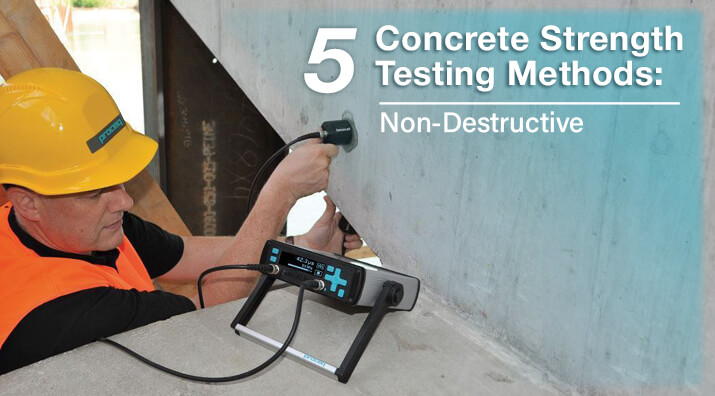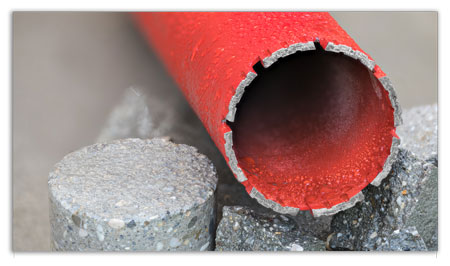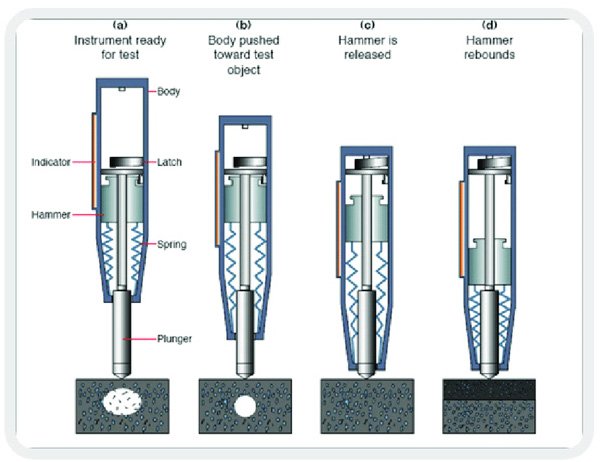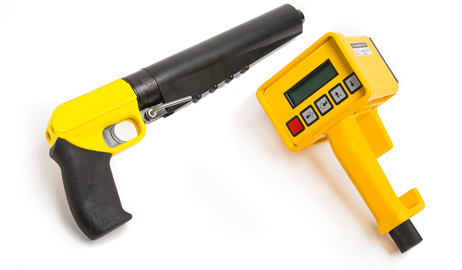
Testing the properties of hardened concrete is central to evaluating a structure, whether it is decades old or still under construction. In-place testing of concrete is a significant part of assessing an existing structure's safety and physical condition for routine maintenance before modifications or when changing ownership as a matter of due diligence. For projects in progress, testing hardened concrete with nondestructive or other construction materials tests is often the only acceptable way to resolve quality issues encountered during construction.
While concrete strength is justifiably a primary factor in the evaluation of hardened concrete, reinforcing steel location and corrosion, moisture characteristics, and physical condition also need to be assessed. This blog post will discuss in-place and nondestructive methods and equipment to measure concrete strength. In addition to the ASTM test methods listed throughout this blog post, we recommend ACI 437R-19: Strength Evaluation of Existing Concrete Buildings from the American Concrete Institute (ACI) as a comprehensive reference for these tests. Another useful guide for these evaluations is ASTM C823, Standard Practice for Examination and Sampling of Hardened Concrete in Constructions.
Concrete Compressive Strength
Whether assessing older concrete or investigating recently failed laboratory tests, in-place compressive strength is the most common factor for consideration. Evaluation of concrete strength can take a couple of different directions. If the goal is to determine uniformity throughout the structure, in-place tests using indirect measurements to compare relative strengths may be sufficient by themselves. These tests are less invasive and provide reliable empirical data. When examining structures where problem areas are unknown, starting with in-place test methods is a fast and efficient way to assess uniformity. This method allows the development of a profile to focus on zones that would benefit from a closer examination. If an accurate estimation of compressive strength is required, strength data from cores must supplement these in-place nondestructive tests.
Coring
Core samples are a benchmark for in-place concrete strength determinations. Core samples tested in the laboratory with corrections for orientation and unbound aggregates provide simple, accurate, and straightforward data on actual strength. The obvious problem is that core sampling causes cosmetic and possibly structural damage to the structure.

Carefully planned coring locations minimize the visual and structural impact of the holes. A few cores often suffice as a basis for the correlation of other types of testing to establish reliable concrete strengths. This approach is more efficient and economical, and it reduces damage to the structure.
Concrete coring equipment requires some initial expenditure, but the cost of consumables is low relative to the number of samples taken. ASTM C42 covers the sampling, preparation, and testing of concrete cores.
Rebound Number
Concrete test hammers use a spring-loaded mass to impact the concrete surface and record the rebound energy, or R-value, from the impact. Sometimes called Schmidt hammers or Swiss hammers, these economic instruments are quick and straightforward to use for determining concrete uniformity over large areas. When the rebound values are directly correlated to the test cylinder or core sample compressive strengths of the same mix, as described in ASTM C805, a reliable estimate of in-place strength can be developed.

A single operator can use the test hammer to quickly profile the strength uniformity of a more massive concrete structure and define areas requiring more focused testing. The basis of the rebound number is surface hardness, so textured or softer areas will require grinding before performing a test. Damage to the concrete surface from rebound testing is minimal, often leaving just minor dimples on the surface.
Newer versions of this device, such as the digital rebound hammer, use electronic accelerometers to measure rebound numbers. They also provide GPS position recording and web-based reporting, thus improving the accuracy and reliability of testing. For a more in-depth discussion of the concrete test hammer, see our previous blog post Rebound Hammer Test: What You May Not Know.
Probe Penetration
The Windsor probe method uses a powder-actuated charge (a “blank” firearm cartridge) to drive a hardened steel probe into the concrete surface. Advanced versions of the device feature electronic probe measurement, logging, and calculation of compressive strengths. Three probes driven into a defined area constitute a single test. The exposed lengths of the probes are measured and provide an average penetration resistance. Since the hardness of the aggregate directly affects the penetration, the manufacturer offers a Moh’s hardness test kit for the aggregate and a chart to provide corrected resistance values.

As noted in ASTM C803, establishing a correlation between penetration resistance and compressive strength of similar mix designs allows accurate estimates of concrete strength. The test is relatively easy to run, but the powder-actuated mechanism and high-energy impact require observation of strict safety measures and the use of personal protective equipment. Safety features on the device prevent operation unless firmly pushed into the firing position. Steel probes and blank powder charges are consumables for each test performed with this device. The Windsor probe test will result in some limited surface damage caused by the penetration holes.
Maturity
Maturity testing requires preliminary testing, planning of concrete placement, and experienced interpretation, but the strength estimates this data provides are proven and reliable. Wired or wireless sensors embedded in the concrete record temperatures of the curing concrete over time to provide a temperature profile. A comparison of in-place temperature history vs. laboratory test data calculates the strength.
This method is beneficial and often specified to predict safe curing times for form removal and reshoring, post-tensioning operations, and putting structures into service. The embedded sensors can also monitor performance over more extended periods. ASTM C1074 and AASHTO methods T 276 and T 325 explain maturity test procedures. Some versions of this concrete maturity testing equipment have automated data logging or remote monitoring features.
Ultrasonic Pulse Velocity
Ultrasonic pulse velocity testers use transmitter and receiver transducers to send and receive a timed pulse of ultrasonic energy through a section of concrete. The transit time of the signal indicates the density of the concrete and is affected by voids, inclusions, and discontinuities. This method is optimal for gathering related information on uniformity and detecting internal defects like honeycombing and cracking. Accurate correlations to compressive strengths are possible using the SONREB (SONic-REBound) method¹, an algorithm combining results from pulse velocity and concrete test hammer methods. The operation of the instrument and interpretation of test values requires advanced training and experience. ASTM C597 describes procedures for the use of pulse velocity meters on concrete.
¹Note There is currently no ASTM or AASHTO test procedure for the SONREB method.
We hope this article on the NDT test for concrete strength has given you an idea of what is needed to assess the strength of hardened concrete in place. For more information on the mentioned NDT instruments, visit our nondestructive testing equipment page or please contact our testing experts for questions or help with your application.
Testing Resources
Standard Test Methods, Specifications, and Practices
Individual test methods and specifications referenced in our product descriptions, blog articles, and videos are available for review or purchase from the professional organizations noted.
- ASTM International (American Society for Testing and Materials)
- AASHTO (American Association of State Highway and Transportation Officials)
- ACI (American Concrete Institute)
- State DOTs (Departments of Transportation)
- ISO (International Organization for Standardization)
- BS (British Standards)
- EN (European Standards)
















